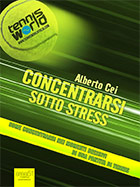Concentration and self-talk in football
Mirko Farina and Alberto Cei
Abstract
Concentration and self-talk are key (often under appreciated) factors underlying elite sport performance. In this chapter we define concentration and self-talk and look at some of their applications (section 1). We investigate their relation, their functions, and discuss their contribution to sport performance (sections 2). We focus on the specific role that concentration and self-talk play in football (sections 3; 4). So, we analyse how they improve players’ performance by, for instance: (i) providing a balanced level of anxiety, (ii). enhancing focus and attention, (iii).promoting decision making skill and decreasing reaction time, (iv). motivating to increase efforts, (v). improving coordination with teammates and, more generally, deterring behaviours that have negative consequences on the field. We then analyse (section 5) the peak moment of any football performance (the act of scoring a goal) and look at how to use concentration and self-talk to increase the chances of scoring a goal (or not conceding it). We conclude (section 6), by providing practitioners with a series of applied coaching strategies that can be used to build more successful coaching programs (both in team sports and in football).To do so, we first identify some crucial game factors influencing football performance (e.g. game momentum, stress, anxiety, the players’ capacity to re-focus on the present) and then look at how coaches can intervene to satisfy some of these games demands.
In: E. Konter, J. Beckmann, T.M. Loughead (eds.), Football Psychology. Oxford: Routledge.





